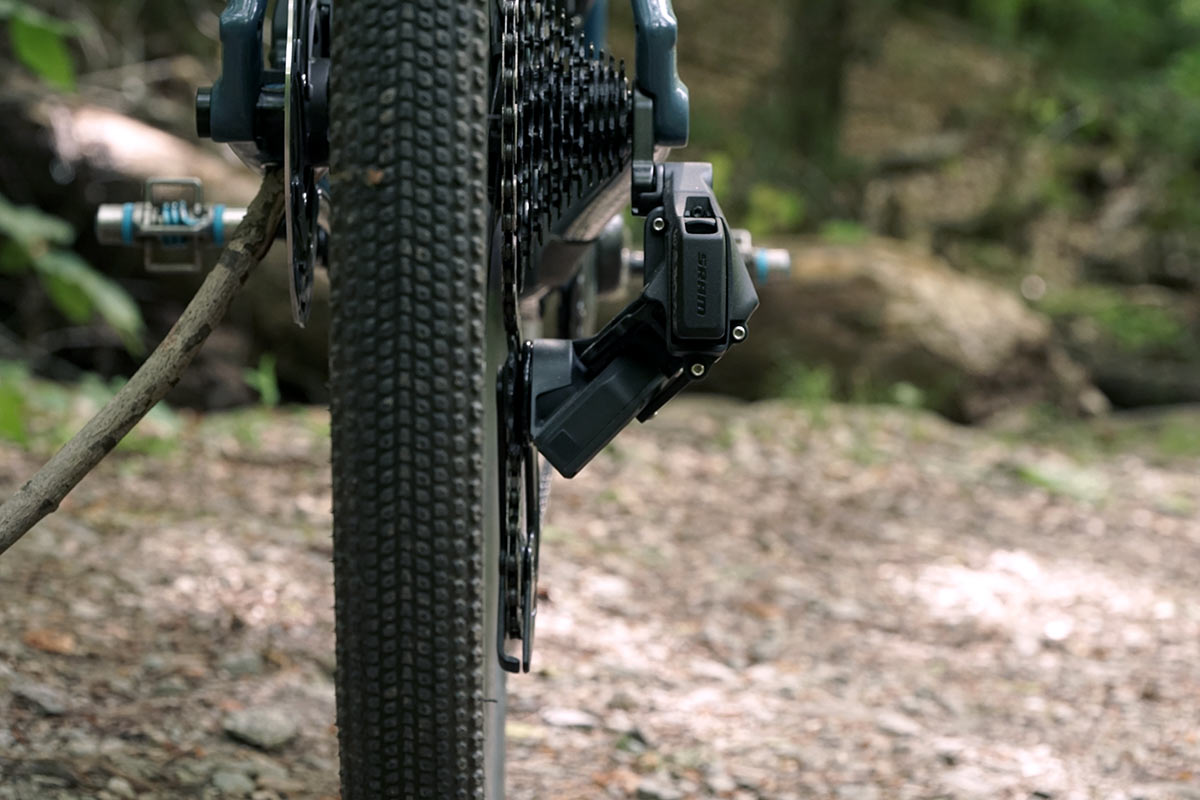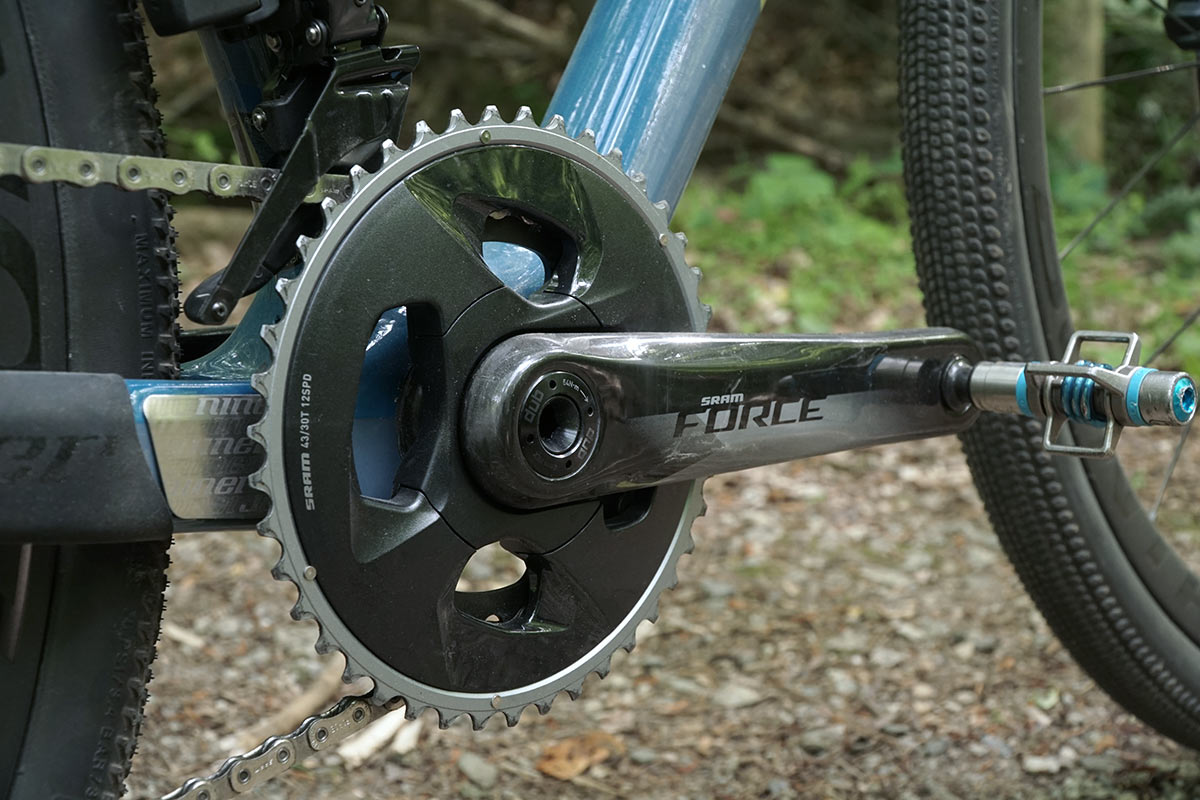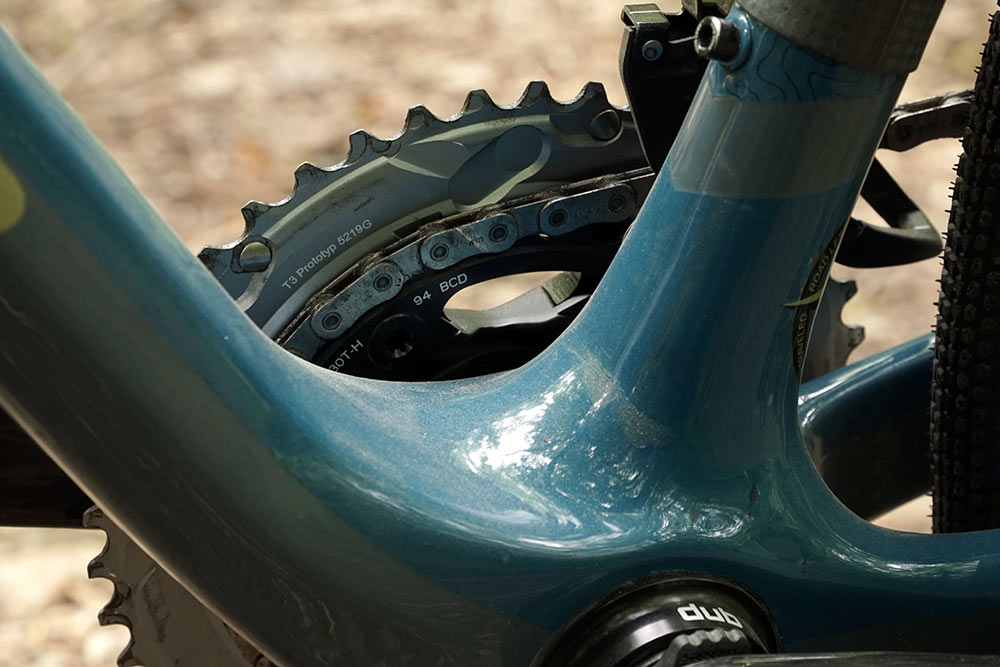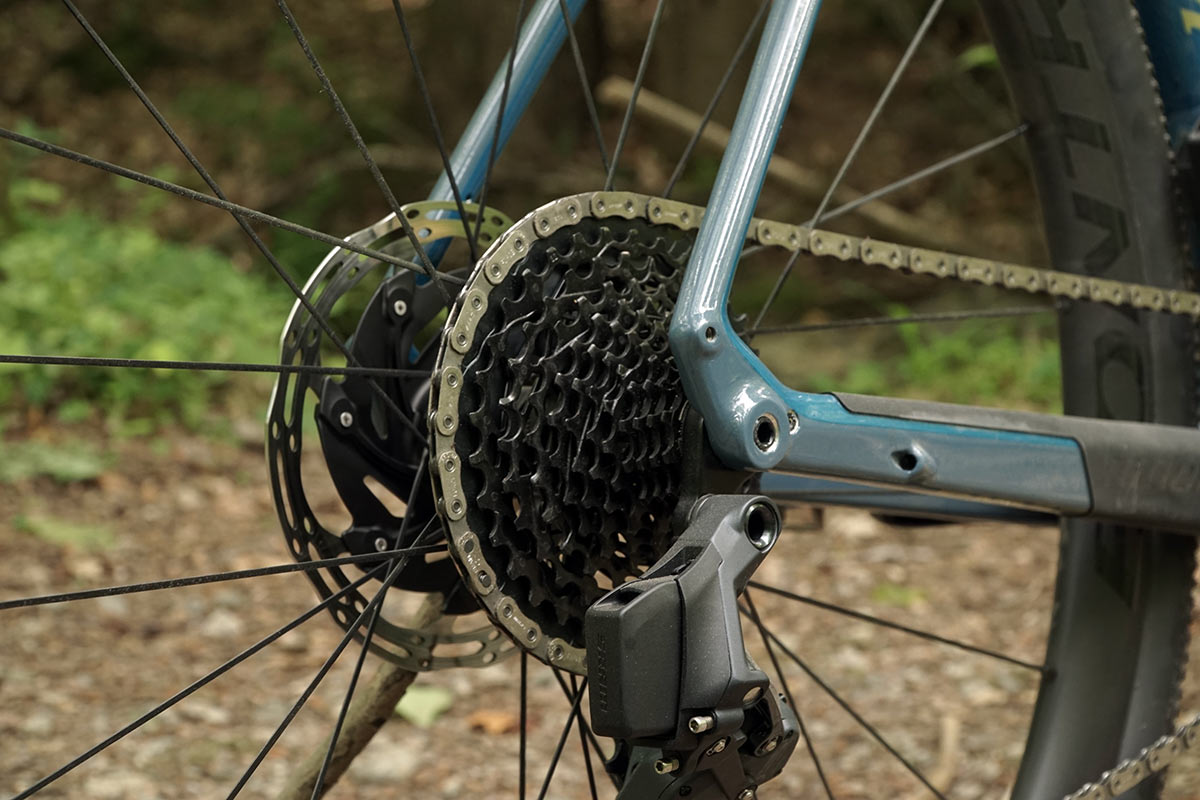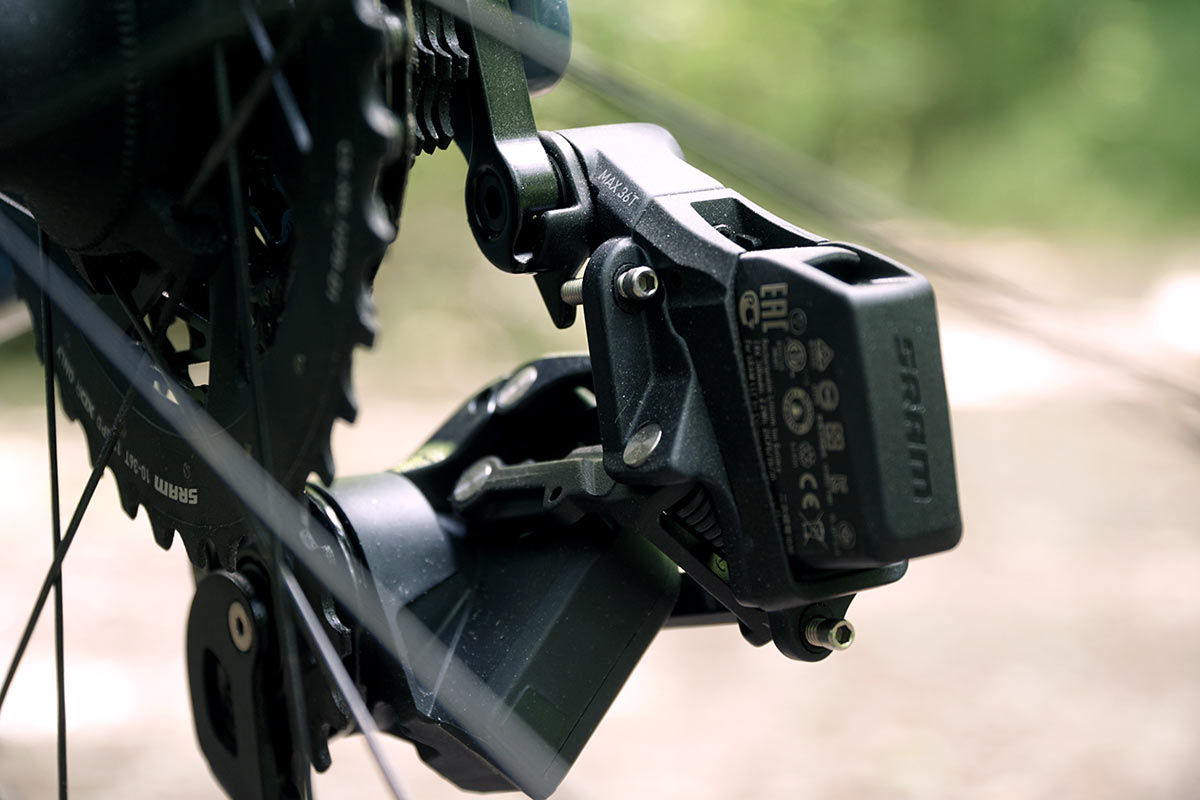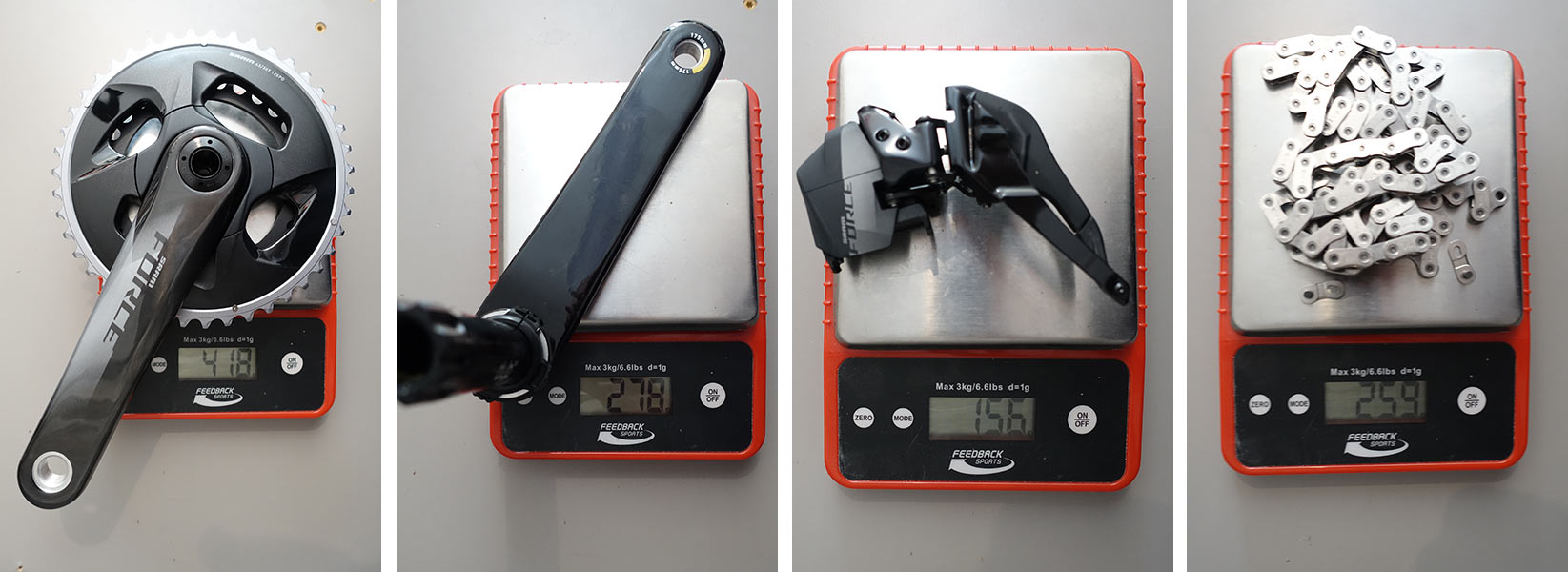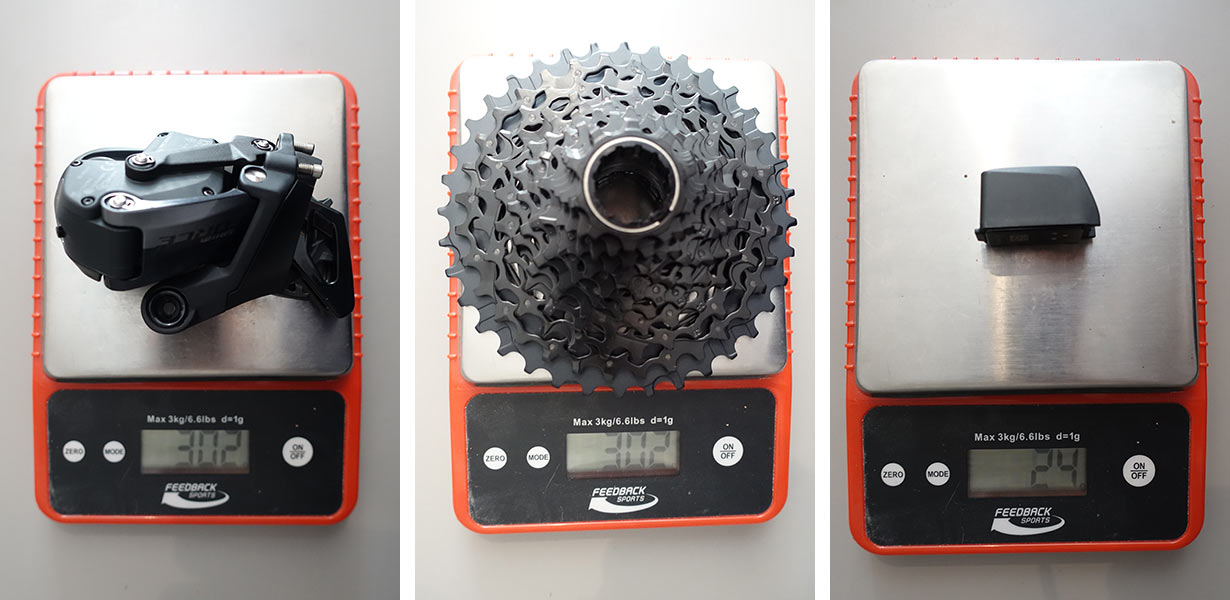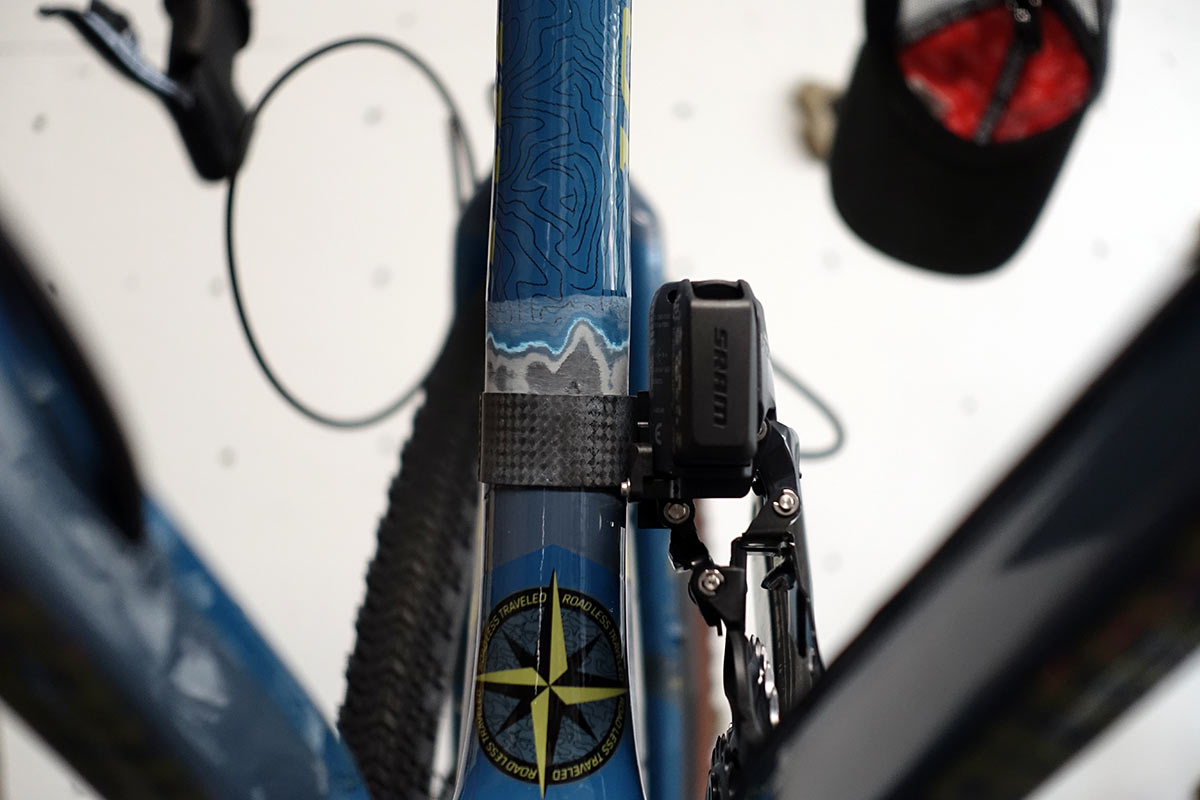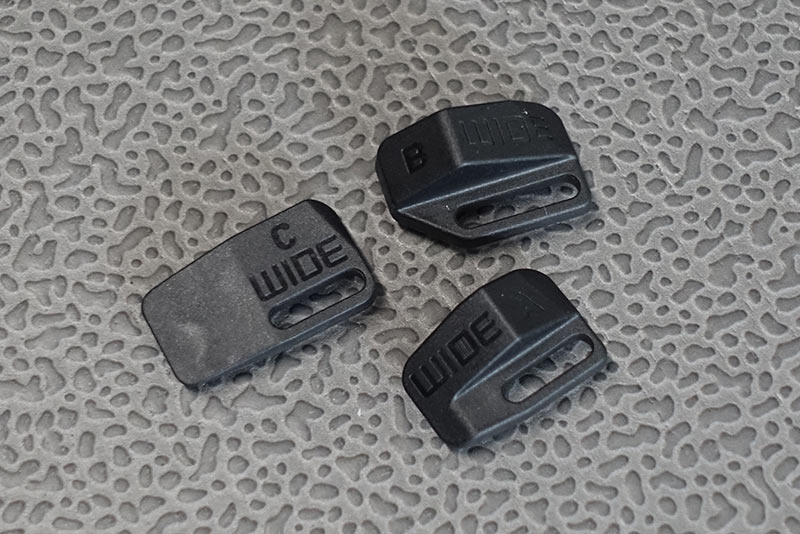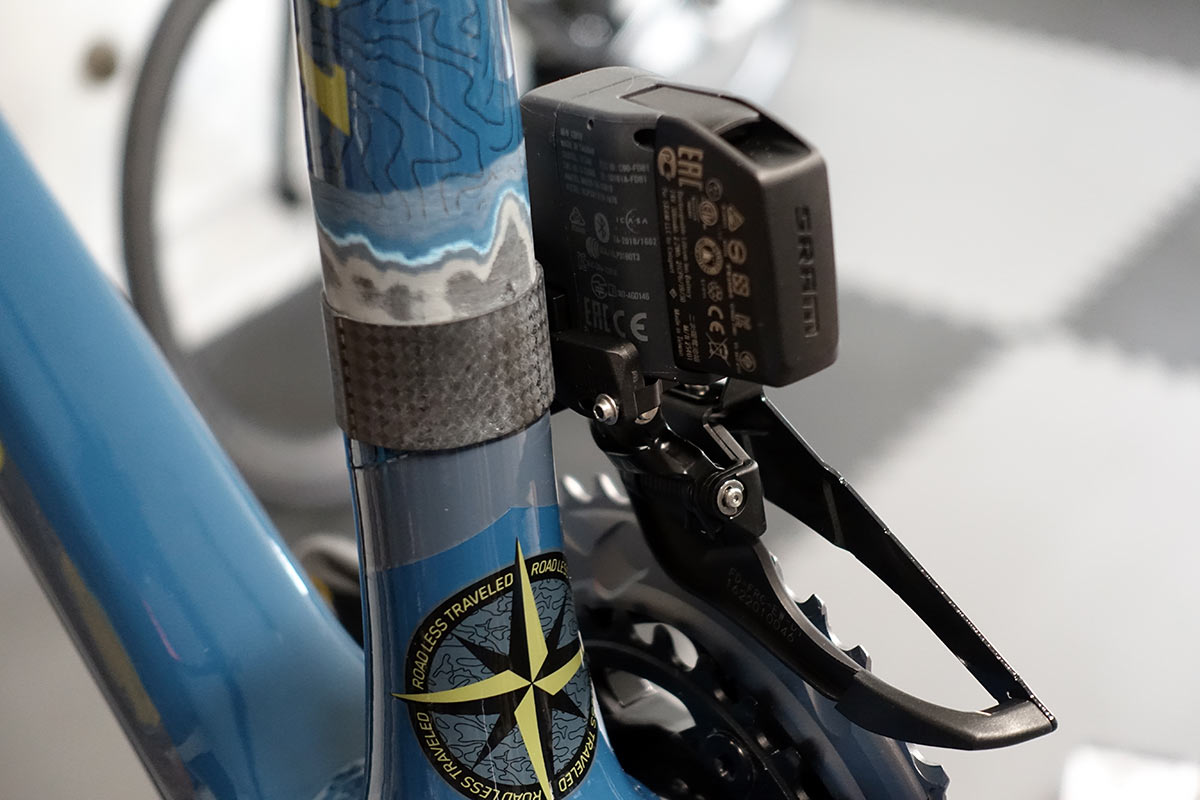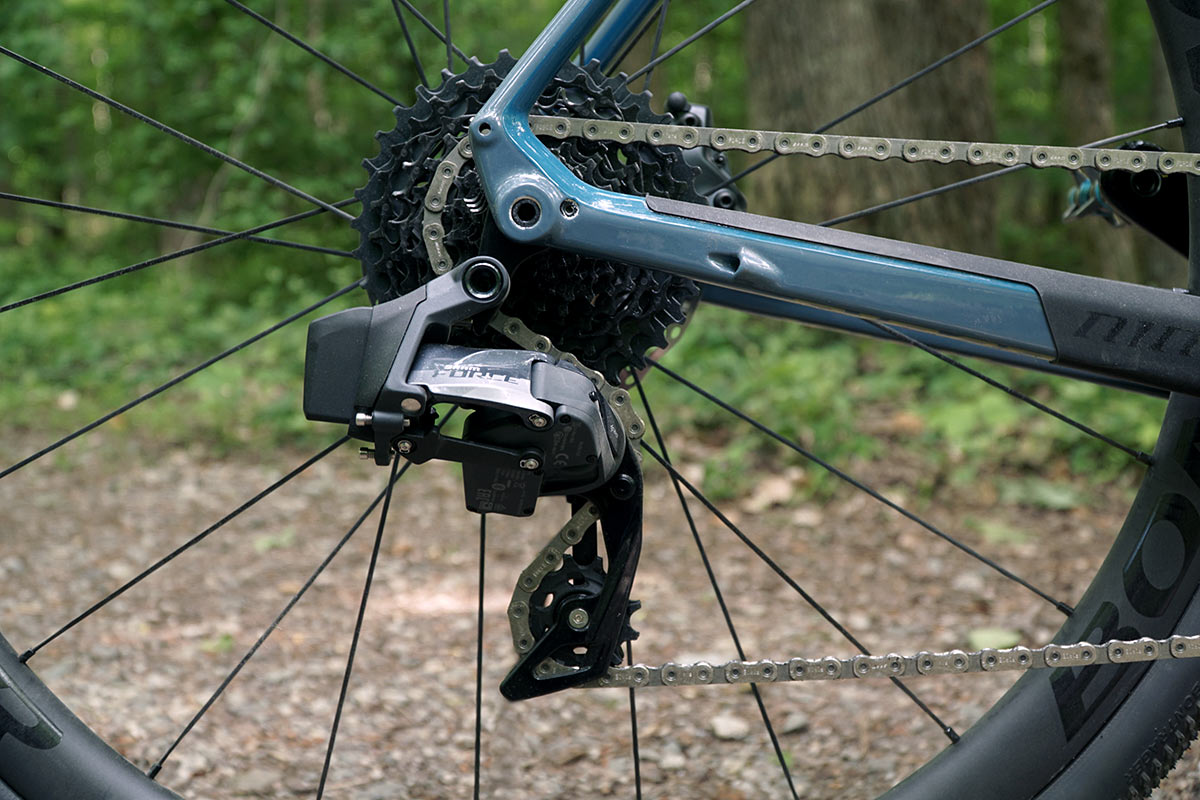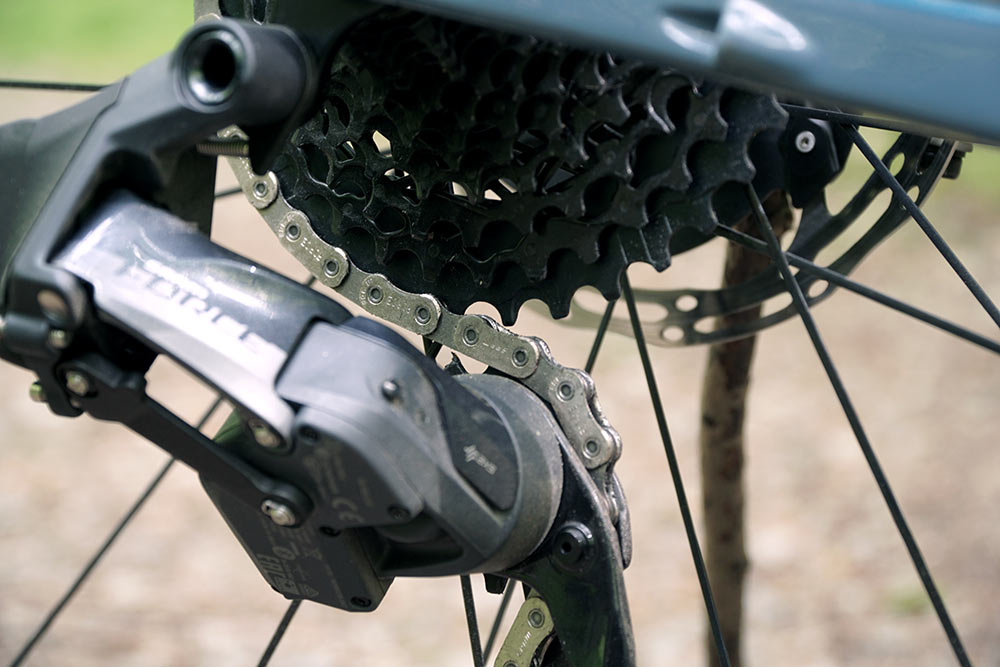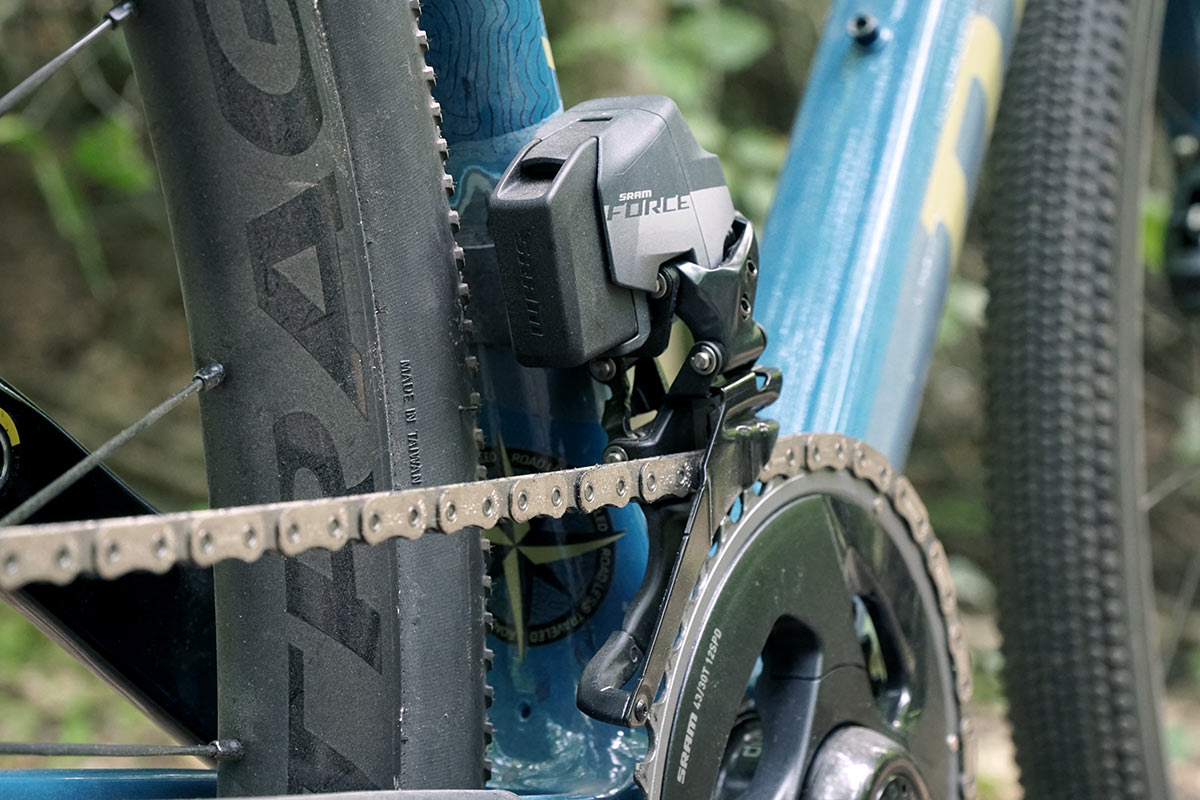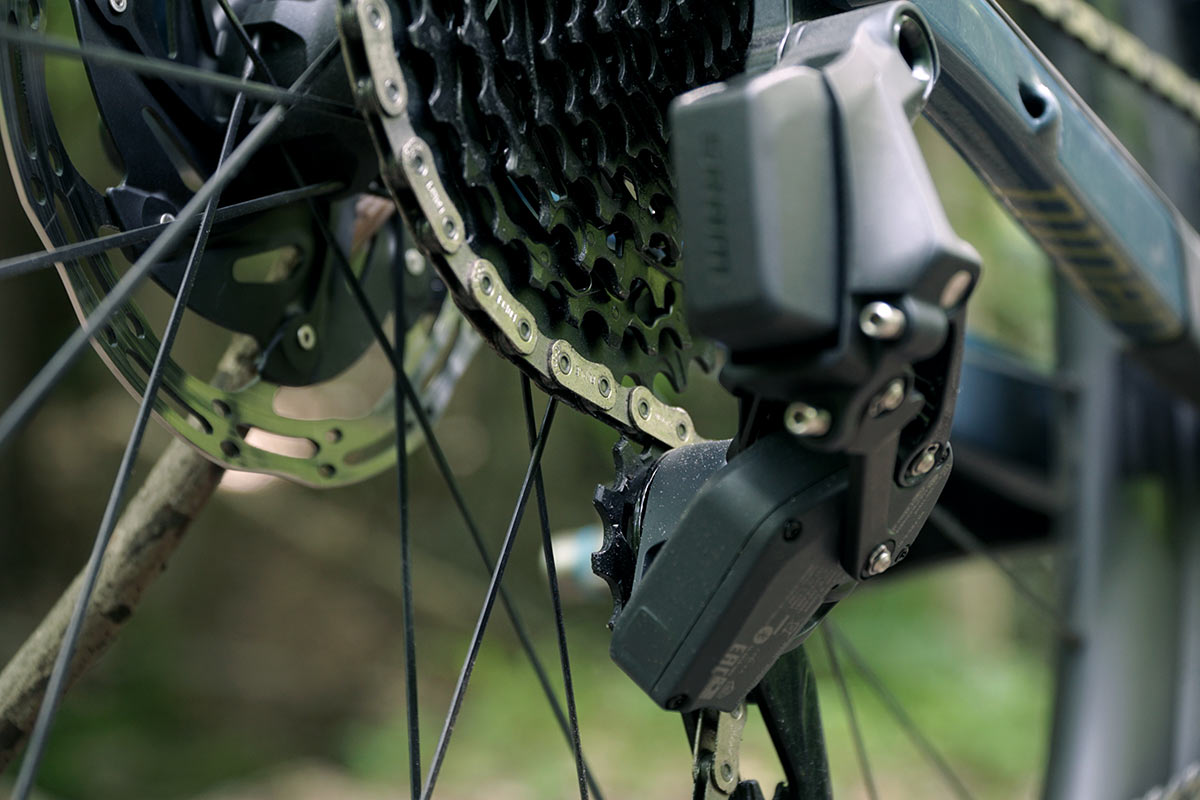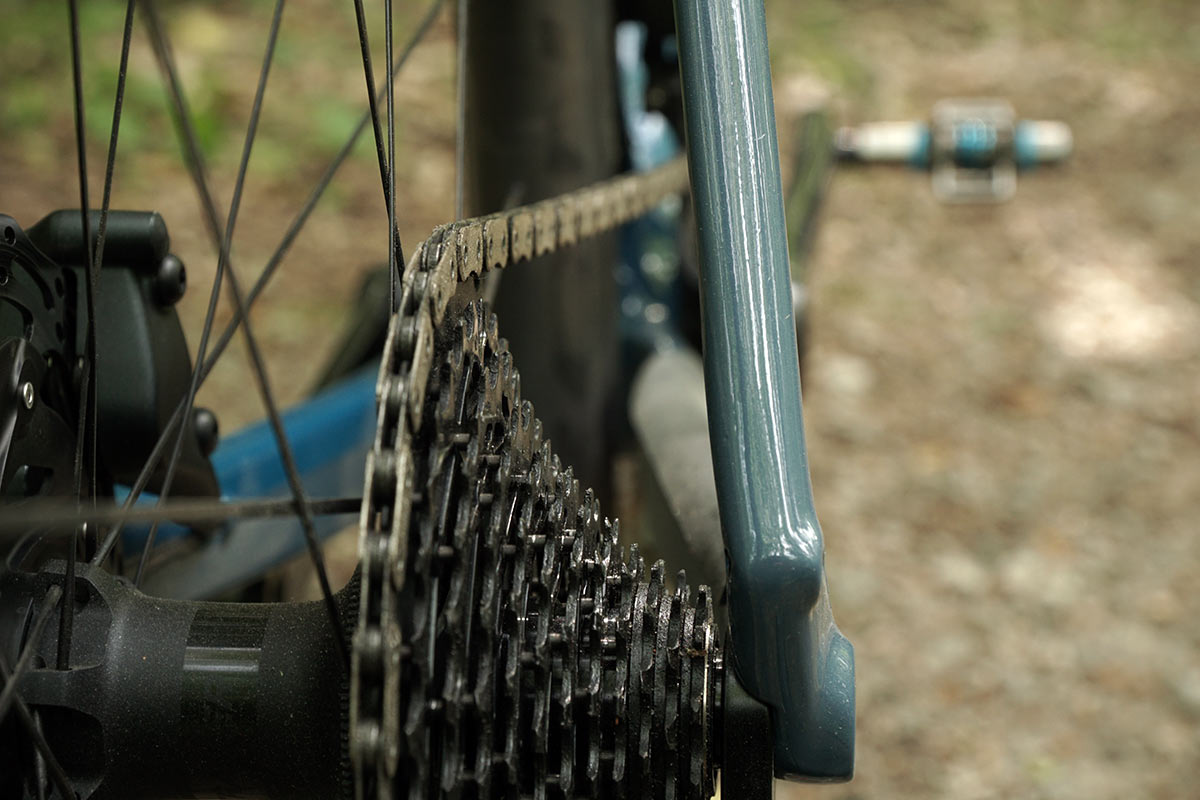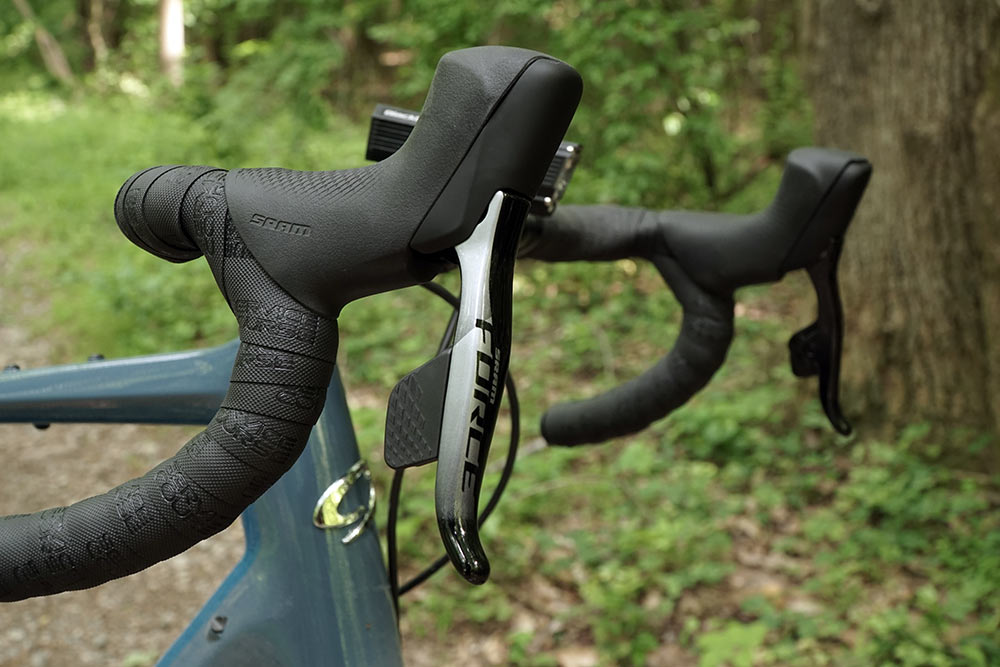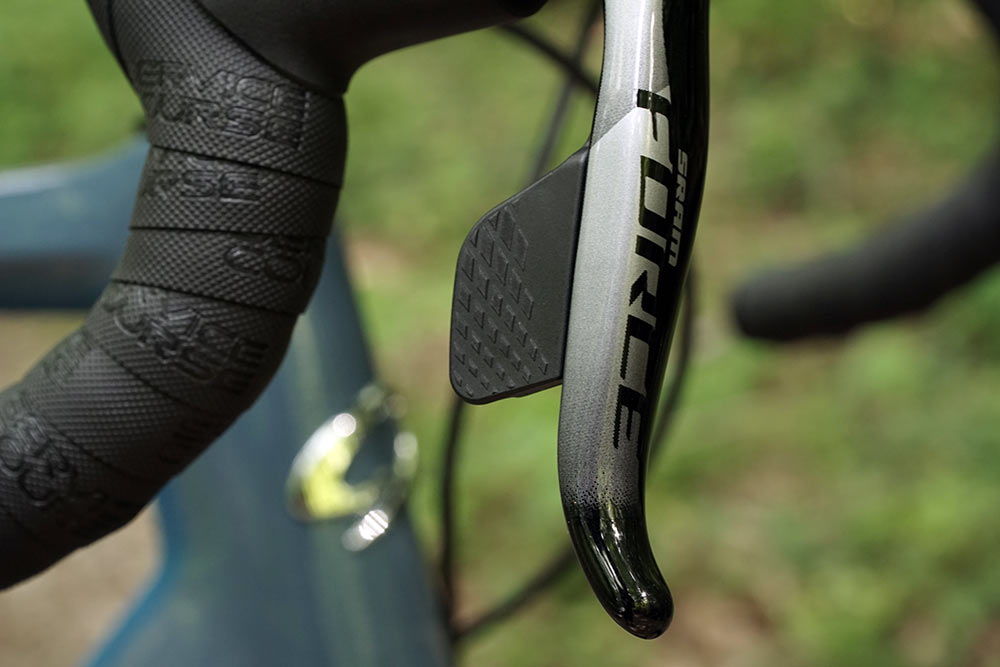The new SRAM Force AXS “Wide” group does a lot. It offers a super-compact 43/30 chainring combo for hilly terrain or loaded bikepacking adventure bikes. It adds tire clearance across all of their chainring combos, albeit by swapping in one of their other 12-speed chainring pairs after you buy their new 43/30 crankset. It gives you a wider range cassette option in the back, too.
And it does all this with a modular nature that helps it blend into an existing setup or let you build a new bike exactly the way you want it.
For the full technical details, pricing and a visual comparison of the improved tire clearance between all three generations of eTap/AXS front derailleurs, check out the launch post. Here, we’ll cover actual weights, install notes and first ride impressions…
Force AXS Wide video overview
That’s the overview, keep reading for actual weights. One note: This video was shot before we had clarification from SRAM on the compatibility matrix of this new “Wide” front derailleur and their complete chainring lineup. So let’s clear that up first.
Which SRAM 12-speed chainrings work with Force Wide?
Basically they’re ALL cross compatible, here’s how it works:
- The new “Wide” crankset uses a 5mm wider spindle, adding 2.5mm width per side.
- All of SRAM’s 12-speed chainrings sets will mount to that wider spindle.
- They will have a 2.5mm wider chainline once mounted to the wider spindle.
- The Force Wide front derailleur sits 2.5mm farther out from the seat tube.
- If you want to run any of SRAM’s 12-speed chainrings on the wider spindle, you need to use the Wide front derailleur.
- So, yes, you can put the 50/37, 48/35, and 46,33 chainring combos on it, but you’ll need to get the 107bcd spider with them because the 43/30 compact chainring combo that comes on the wider spindle uses a smaller 94bcd spider.
- The wider spindle comes with the new 43/30 chainring combo installed, it’s not sold separately yet.
Why would you want to put the other chainring combos on the wider crank spindle? To add tire clearance, up to 700×45 or 650B x 2.1″. Or to add taller gearing to your bike that has wider tires.
What about the Force wide range cassette?
What you do on the front of the bike has no impact on the rear. The new 10-36 wide range cassette will work with any of the front chainring combos and spindle widths. It mounts to their XDR freehub body, just like all the rest of their 12 speed cassettes.
And the rear derailleur?
You will, however, need the new 36T Max AXS rear derailleur to run the new cassette. It’s B-knuckle is longer and lower, which positions the upper pulley wheel so that it can clear the 36T cog.
Fortunately, it also works with the 10-33 and 10-28 12-speed cassettes, too. So, like the front, you can mix and match, so long as you’re ensuring the max tooth capacity printed on the derailleur matches the max tooth size on your cassette.
They’ll still offer the 33T Max version of the derailleur for pure road bikes, which works with their smallest 10-26 12-speed cassette.
So, basically, it’s best to think of this new “Wide” group as two separate systems…one for the front, and one for the rear.
SRAM Force AXS “Wide” actual weights
Actual weights for the new SRAM Force AXS Wide components are:
- Crankset with 43/30 chainrings: 418g + 278g = 696g
- Wide front derailleur: 156g
- Chain (full length w/ quick link): 259g
 Rear derailleur: 302g
Rear derailleur: 302g- 10-36 Cassette: 302g
- Battery: 24g
- HRD eTap AXS levers with brake calipers: 406g + 422g =828g
- 160mm Centerline XR Centerlock Rotor: 131g
- PFBB30 DUB bottom bracket w/ Wide spacers: 89g
Notes: Subtract a few grams for the brake spacers, which were impossible to remove until we connected the hose to the lever and opened the system. Derailleurs were weighed without batteries, so you’ll need to double the battery weight. We trimmed a few inches off each of the brake hoses to fit a Niner RLT 9 RDO frame, size 58, and removed a two links from the chain.
Complete weight for the group with all parts adds up to 2,942g. This is only 16g less than the standard Force AXS group Zach tested, albeit with 46/33 cranks and a different BB and rotor setup.
SRAM Force AXS Wide install notes
Installation is straightforward, with two things worth calling out if you’ve never installed a SRAM AXS drivetrain. First, you’ll need to line up the front derailleur with the large chainring using the lines and indents on the cage. It’s easy, but important. SRAM has a complete PDF installation guide available for download, too.
Second, you’ll need to choose the wedge that best fits between your frame and the front derailleur, then bolt it onto the inside of the derailleur.
Because the motor is pushing against its mount on the clamp or braze-on, as opposed to you pulling cable, and because it’s powerful, the wedge gives it piece of support so it doesn’t budge. The result is quick, precise, and strong outboard shifts.
Because you’re probably wondering what’s up with that front derailleur clamp, here’s the deal: Parlee makes amazing carbon fiber FD clamps. But because they’re Parlee, and because they’re carbon, they’re precision. Which means layers of paint make a tube too fat. So, with Niner’s in the loop on this, I sanded down the frame to make the clamp fit. If you’re not willing to do this, use a standard hinged clamp as they’re more forgiving. Just uglier. And heavier.
Out back, it’s standard installation procedure. Bolt the parts on, then use the buttons on the shift paddles to fine tune the derailleur’s position.
It comes with a plastic guide to help you set the B-screw’s tension to position the upper pulley in the right place for the best shifting.
SRAM Force “Wide” ride review
SRAM’s electronic front shifting has always been good. Strong, powerful, and quick. As you’d expect from a top level group. This Wide version is no different. Toward the end of the video, you’ll see me shifting it back and forth very quickly with no chain loss or hesitation.
Same for the rear, and it keeps SRAM’s forceful (no pun intended) chunk sound when shifting under pressure, just without the mechanical click at the lever. The Orbit hydraulic “clutch” chain management system works great, you can see it in action in this post.
The 2.5mm wider chainline doesn’t seem to affect shifting performance at the tall end of the cassette. It also doesn’t seem to increase noise or perceptible friction.
The levers carry over and keep the deeper nubs on the shift paddles. They’re detectable even with full finger gloves, and provide a nice tactile feel. Compared to SRAM’s mechanical shifters, the tops of these paddles sit just a hair lower. Or, at least, it feels like there’s more of a gap between the bottom of the hood body and the top of the paddle.
This adds finger clearance when braking, which means it’s easier to keep my pinky finger wrapped around the bar on hairy descents. I can’t do that so well with their mechanical shifters.
If you’re already a fan of SRAM’s wireless shifting, you’ll like this, too. I couldn’t really feel any downside to the wider Q-Factor, but I’m also a larger rider (6’2″ with 13US feet). And I’m frequently bouncing between road, gravel and MTB, so I’m quite tolerant of differences.
I like that it’s a mostly modular system, so you can build the exact bike you need. And I like the left-right paddle shifting, it’s extremely intuitive and hard to forget when going back to other bikes. With the key differences here merely being more options and wider tire clearance, as opposed to performance updates, it’s an overall win and worth a test ride if you’re in the market for such things.
For the full technical story on this new group, with a visual comparison of tire clearance and shape changes for every generation of eTap/AXS front derailleurs, check out this post.
